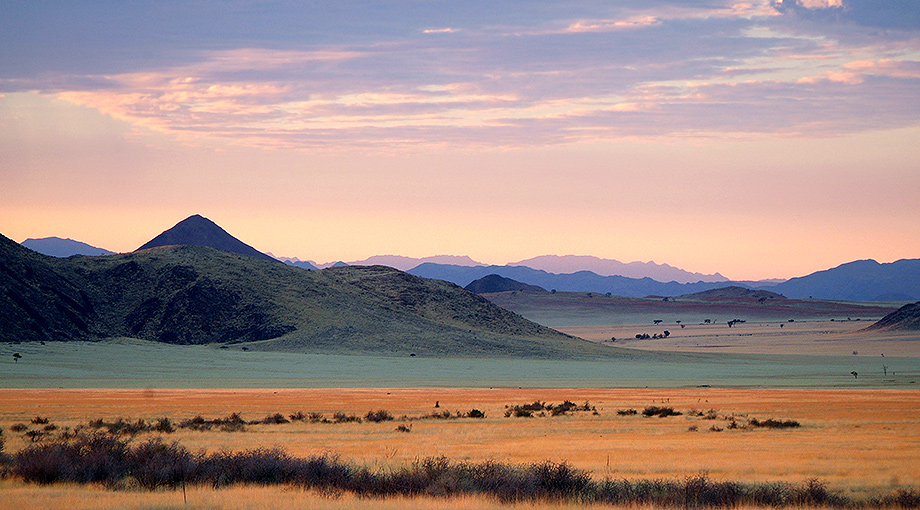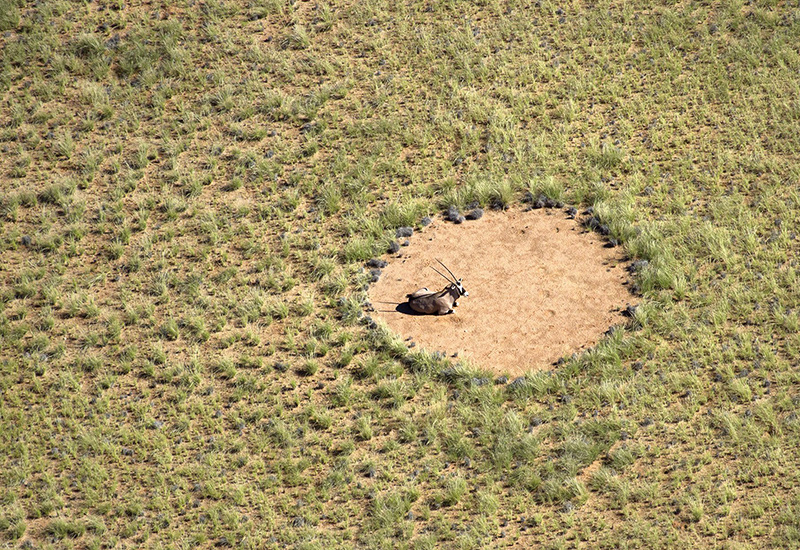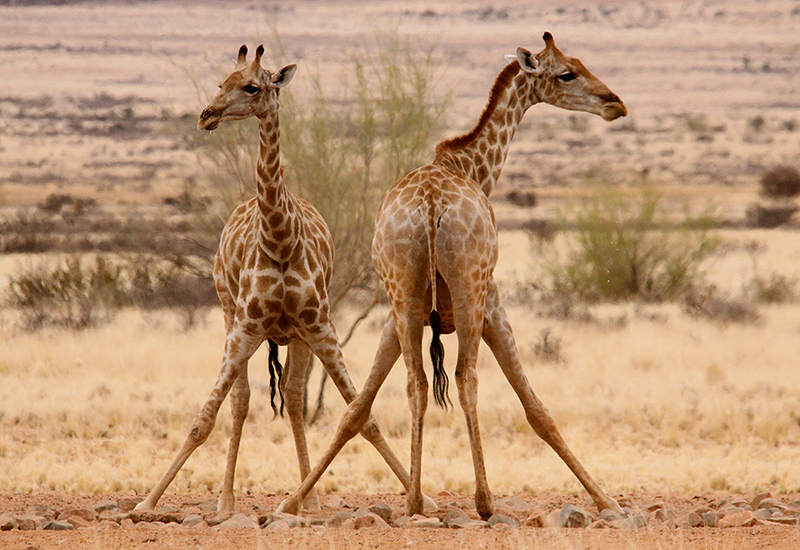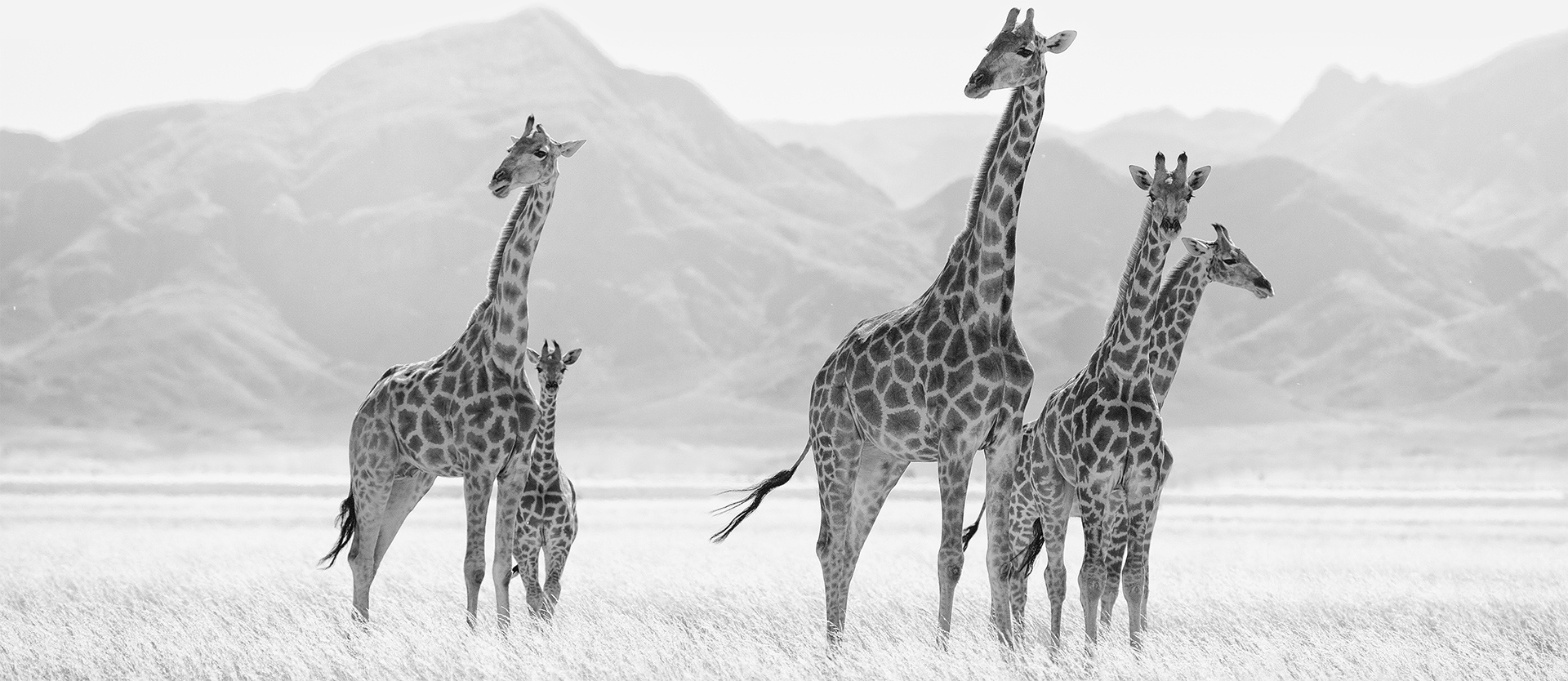A Vast and Ancient Place
The Landscape

Running along the eastern edge of the Namib, between the arid desert and the higher-rainfall escarpment area, the pro-Namib ecozone features plants and wildlife specially adapted to this semi-arid region—and holds the promise of exciting conservation opportunities. With 50 millimeters (nearly two inches) more rain per year on average compared to the Namib (which gets less than an inch each year), grasses, trees, shrubs, and other vegetation are able to take root, providing a critical food source for wildlife migrating east from the drier desert areas during the sporadic rains (December to April).
Conserving this pro-Namib landscape will protect large-scale grasslands which are critical to maintaining seasonal migratory pathways, protecting biodiversity, and sustaining wildlife, including endangered species like giraffe and rhino. Grasslands are also a significant carbon store – currently lost by misplaced cattle, sheep and goat farming which strips the land bare.

Grassland Restoration
Over-grazing has significantly depleted the grass coverage of the land to be acquired. Allowing for seasonal migration of game rather than intensive livestock over-grazing will over time restore grass coverage to create a significant new carbon sink.

Biomass increase
The establishment of the ProNamib Nature Reserve significantly increased biomass on the reserve. This is measured annually across the entire ecosystem. Whilst the biomass increases or decreases in accordance with rainfall – and has fallen due to the last 7 years…

Giraffe & Rhino
The Camel Thorn trees (Acacia erioloba) that thrive here, thanks to the ephemeral rivers that flood during the rainy season, provide sustenance for the Angolan giraffe (Giraffa camelopardalis angolensis), also known as the Namibian giraffe.

The ProNamib Trust
The ProNamib Trust was established in March 2020 in order to facilitate the acquisition of land for conservation and to raise funds for the Environment.

